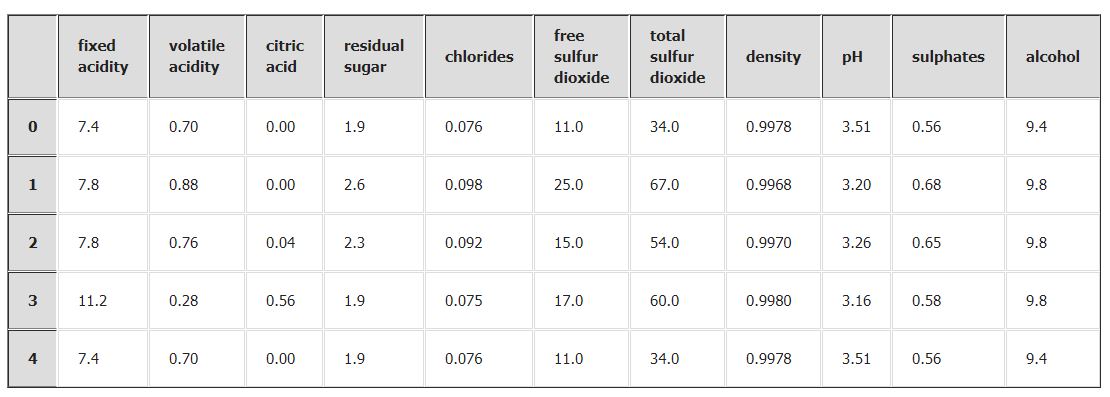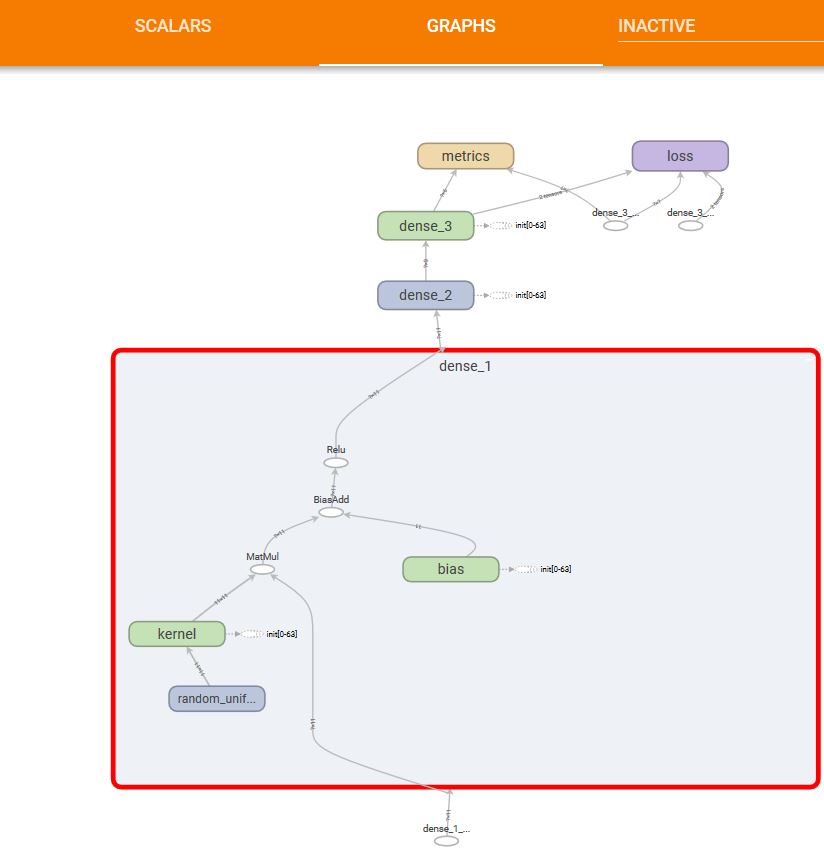Classification is a technique in which we classify series of objects. Let us assume we have six categories of samples of wine and we need to make a model to classify the wine quality.
Import the libraries required for the analysis,
import numpy as np import pandas as pd from keras.models import Sequential from keras.layers import Dense,Dropout from sklearn.model_selection import train_test_split from sklearn.model_selection import cross_val_score from sklearn.model_selection import KFold from sklearn.preprocessing import LabelEncoder
Load the file,
df=pd.read_csv("winequality-red.csv")
df.head()
X=df.iloc[:,0:11].values
y=df.iloc[:,-1].values
Now , transform the data to be fit into a deep learning model,
from keras.utils import np_utils encoder = LabelEncoder() encoder.fit(y) encoded_Y = encoder.transform(y) # convert integers to dummy variables # convert integers to dummy variables (i.e. one hot encoded) dummy_y = np_utils.to_categorical(encoded_Y) dummy_y.shape
Create a model, this model is having 11 input and 6 as the categorical shape as we have encoded it with categorical encoding( refer shape above)
def baseline_model():
# create model
model = Sequential()
model.add(Dense(100, input_dim=11, kernel_initializer='normal', activation='relu'))
model.add(Dense(6, kernel_initializer='normal', activation='sigmoid'))
# Compile model
model.compile(loss='categorical_crossentropy', optimizer='adam', metrics=['accuracy'])
return model
Using K-Fold method,
from keras.wrappers.scikit_learn import KerasClassifier
estimator = KerasClassifier(build_fn=baseline_model, epochs=100, batch_size=100, verbose=0)
kfold = KFold(n_splits=10, shuffle=True, random_state=seed)
results = cross_val_score(estimator, X, dummy_y, cv=kfold)
print("Accuracy: %.2f%% (%.2f%%)" % (results.mean()*100, results.std()*100))
Accuracy: 56.85% (2.52%)
Using simple modeling technique,
model = Sequential() model.add(Dense(100, input_dim=11, kernel_initializer='normal', activation='relu')) model.add(Dense(6, kernel_initializer='normal', activation='sigmoid')) # Compile model model.compile(loss='categorical_crossentropy', optimizer='adam', metrics=['accuracy']) model.fit(X, dummy_y)
Epoch 1/10 1599/1599 [==============================] - 1s - loss: 1.3069 - acc: 0.4221 Epoch 2/10 1599/1599 [==============================] - 0s - loss: 1.1760 - acc: 0.4909 Epoch 3/10 1599/1599 [==============================] - 0s - loss: 1.1731 - acc: 0.4209 Epoch 4/10 1599/1599 [==============================] - 0s - loss: 1.1622 - acc: 0.4459 Epoch 5/10 1599/1599 [==============================] - 0s - loss: 1.1571 - acc: 0.4928 Epoch 6/10 1599/1599 [==============================] - 0s - loss: 1.1346 - acc: 0.5003 Epoch 7/10 1599/1599 [==============================] - 0s - loss: 1.1211 - acc: 0.5116 Epoch 8/10 1599/1599 [==============================] - 0s - loss: 1.1210 - acc: 0.5003 Epoch 9/10 1599/1599 [==============================] - 0s - loss: 1.1077 - acc: 0.5078 Epoch 10/10 1599/1599 [==============================] - 0s - loss: 1.0982 - acc: 0.5009
The Graph of the model is as:
The loss is as,


